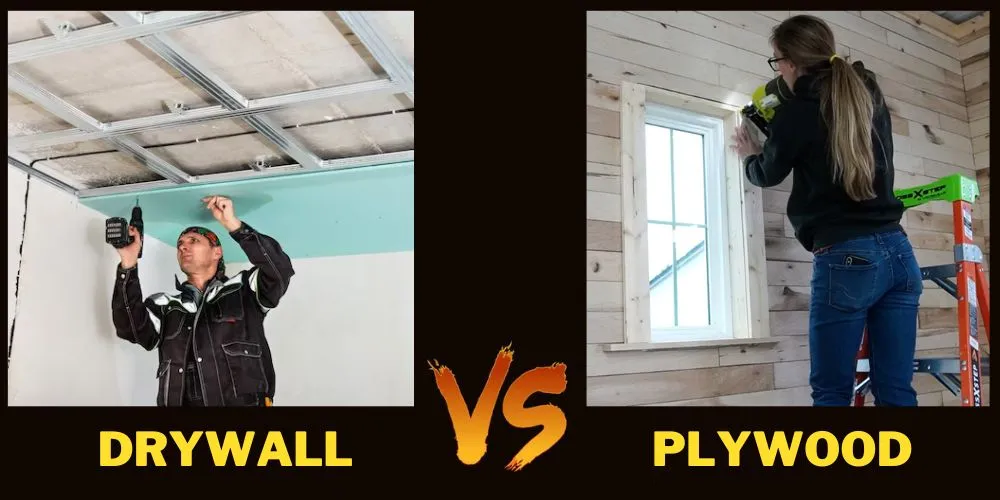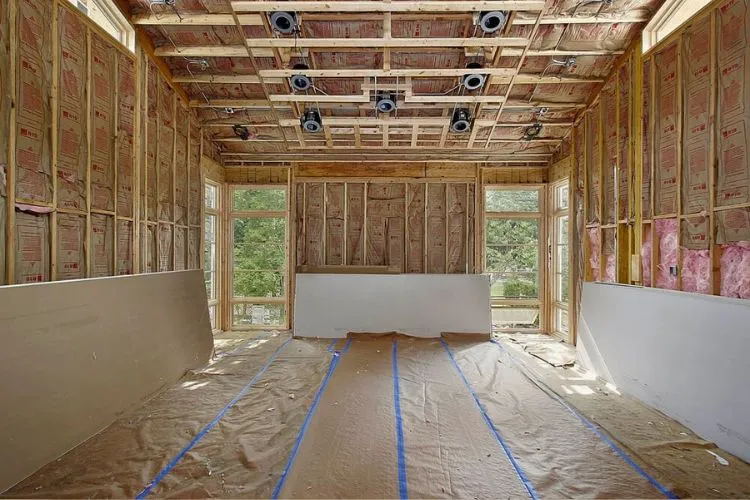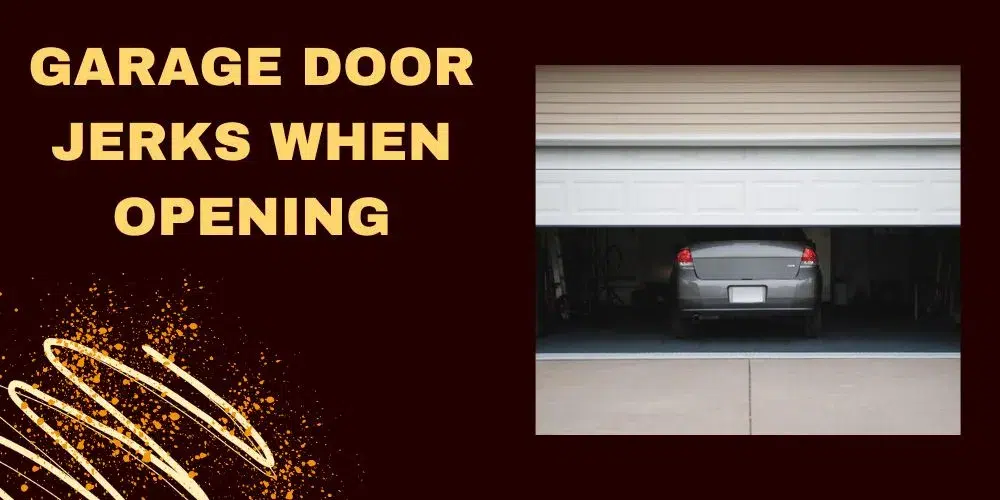Regardless of whether you’re doing a small-scale renovation or building your dream home, choosing the right materials is crucial. Two popular choices for construction projects are drywall and plywood.
In this article, we will delve into the significant differences between the two, helping you make an informed decision to pick a winner in this drywall vs plywood debate.
The most crucial distinction is that drywall is primarily fire-resistant, while plywood is not, making drywall a safer option for residential and commercial spaces.

Stay tuned as we explore the pros and cons of each material.
Drywall vs Plywood: A Comprehensive Comparison
In the world of construction, choosing the right materials greatly impacts the overall quality and longevity of your project.
Drywall and plywood, two popular choices for various applications, both have their own pros and cons that need to be considered when selecting the best material for your needs.
In this article, we will provide an in-depth comparison of these materials, focusing on factors such as cost, installation, fire resistance, insulation, and versatility.

Cost
The first and foremost aspect to consider when comparing building materials is cost. In general, drywall is cheaper than plywood.
Drywall sheets can be purchased for about $0.50 per square foot, while plywood typically costs around $0.75 per square foot.
Keep in mind, these prices can vary depending on the thickness and quality of the material. Additionally, there may be fluctuations in price based on the quantities needed.
Installation
Drywall and plywood have different installation techniques, each with its own set of pros and cons. Installing drywall requires far more steps: measuring, cutting, lifting, screwing, taping, mudding, and sanding.
It can be a labor-intensive process and might require professional help for seamless installation. On the other hand, plywood can be installed relatively quickly and easily with a few cuts and some nails or screws, making it more suitable for DIY enthusiasts.
Despite these differences, both materials require a certain level of skill and expertise for proper installation. However, drywall installation tends to be more complex and time-consuming, while installing plywood is generally considered simpler and more straightforward.
Fire Resistance
One of the most significant differences between drywall and plywood is their behavior under exposure to fire. Drywall is composed of gypsum, a naturally occurring mineral with inherent fire-resistant properties.
The gypsum contained in drywall releases water vapor when it is exposed to high temperatures, slowing down the spread of flames.
This makes drywall a safe option for residential and commercial spaces where fire safety is a top priority. The fire resistance afforded by drywall also meets building code requirements in most areas.
On the other hand, plywood is made of thin layers of wood glued together, making it more flammable and susceptible to fire damage.
Although plywood is available with fire-resistant treatments, they are usually more expensive and still not as effective as drywall when it comes to fire prevention.
Insulation
Another factor to consider when comparing drywall and plywood is their insulation properties. In general, drywall offers better insulation for sound and temperature.
The dense gypsum core of drywall acts as an effective barrier against heat transfer, resulting in better energy efficiency compared to plywood.
Furthermore, drywall tends to have better soundproofing properties, making it an ideal choice for rooms where noise reduction is desired.
Plywood, on the other hand, has lower insulation values for both temperature and sound due to its wooden structure. To increase the insulation properties of plywood, you can opt for laminated plywood sheets or add additional insulation layers.
Versatility
Both drywall and plywood have versatile applications, but plywood undoubtedly edges out drywall in terms of overall flexibility.
Plywood is suitable for various structural purposes, such as walls, floors, roofs, and furniture, while drywall is best suited for non-structural, partitioning purposes. Plywood can also withstand more weight and force, making it ideal for applications that require added strength and durability.
That being said, drywall is an excellent choice for interior walls and ceilings due to its smooth, seamless finish. Drywall can also be easily painted or textured, allowing for a considerable amount of customization and design options.
Moisture Resistance
In terms of moisture resistance, neither material is inherently moisture-resistant. Plywood can withstand some dampness, but prolonged exposure to moisture can cause it to rot.
Drywall, on the other hand, is highly susceptible to mold and mildew growth when exposed to moisture. There are special moisture-resistant drywall options available, known as green board or cement board, for use in rooms with high humidity.
In conclusion, when comparing drywall and plywood, there is no one-size-fits-all answer. The choice depends on your specific needs, budget, and desired outcome. Drywall tends to be the preferred option for interior walls and partitions due to its fire resistance, insulation, and cost-effectiveness.
Plywood, on the other hand, is more versatile, making it ideal for structural applications and instances where strength and endurance are required. By carefully considering materials and desired results, you can make the right choice for your construction project.
Plywood vs drywall for garage walls
When it comes to garage walls, the choice between plywood and drywall often comes down to personal preference and the particular needs of your garage. Nevertheless, there are notable differences between the two.
Plywood is known for its strength, water-resistance, durability, and impact resistance. These characteristics make plywood particularly suited to garages where heavy equipment is stored or projects are undertaken.

On the other hand, drywall serves the same purpose of giving sturdiness to your garage walls. In addition, it can provide a smoother finish than plywood, potentially making it more suitable for a finished garage or a garage-to-living-space conversion.
One consideration when choosing between these two options is the weight of the material; a square foot of drywall can weigh upwards of 2.75 pounds, while plywood weighs no more than 2.1 pounds per square foot. This could be a concern if you’re planning to install the wall covering on your own.
In conclusion, there is no definitive answer to whether plywood or drywall is better for garage walls. Your choice between the two will depend on factors such as your budget, your need for water or impact resistance, and your plans to use your garage.
Frequently Asked Question (FAQs)
Is it OK to use plywood instead of drywall?
Answer: Yes, it is OK to use plywood instead of drywall in certain scenarios, particularly where strength, impact resistance, and durability are desired. Plywood is more resistant to moisture and can be easily fixed with nails, screws, and hooks for storage purposes. However, if fire resistance and sound insulation are top priorities, drywall would be the more suitable choice, especially in residential and commercial spaces.
Does plywood insulate better than drywall?
Answer: No, plywood does not insulate better than drywall. Drywall has superior insulation properties for both sound and temperature compared to plywood. The dense gypsum core in drywall offers an effective barrier against heat transfer, contributing to better energy efficiency. Plywood has lower insulation values for both temperature and sound due to its wooden structure, making it less effective in insulating interior partitions.
What is the R-value of plywood vs. drywall?
Answer: The R-value measures a material’s resistance to heat flow and is an indicator of a material’s insulation performance. Plywood generally has an R-value of around 1.25 per inch of thickness, while drywall has an R-value of around 0.45 per ½ inch of thickness. While the R-value for plywood might seem higher, remember that drywall typically has better overall insulation properties due to its dense gypsum core, making it a more effective thermal barrier in most cases.
Should you drywall an unheated garage?
Answer: Installing drywall in an unheated garage can be beneficial for various reasons, such as improving the overall appearance, providing some insulation, reducing noise, and meeting fire resistance requirements. However, installing drywall in an unheated garage is not strictly necessary. The choice depends on your priorities and whether you plan to use the garage space frequently, convert it into living space, or need to accommodate specific building code requirements in your area.
Is drywall better than plywood for a detached garage?
Answer: The choice between drywall and plywood for a detached garage mainly depends on your intended usage and priorities. If fire resistance, sound insulation, and a smooth interior finish are vital, drywall would be a better choice. On the other hand, if strength, durability, moisture resistance, and ease of installation for storage fixtures are essential factors, plywood would be the preferred option. Consider your specific needs and goals to determine the best material for your detached garage.
Conclusion:
The choice between drywall and plywood depends on factors such as intended use, budget, and specific requirements.
While drywall is more suitable for interior walls and partitions due to its fire resistance, insulation properties, and smooth finish, plywood offers greater strength, durability, and versatility for various structural applications.
Ultimately, carefully evaluating each material’s benefits and limitations while considering your project’s specific needs will help you make an informed decision and achieve optimal results in your construction project.


